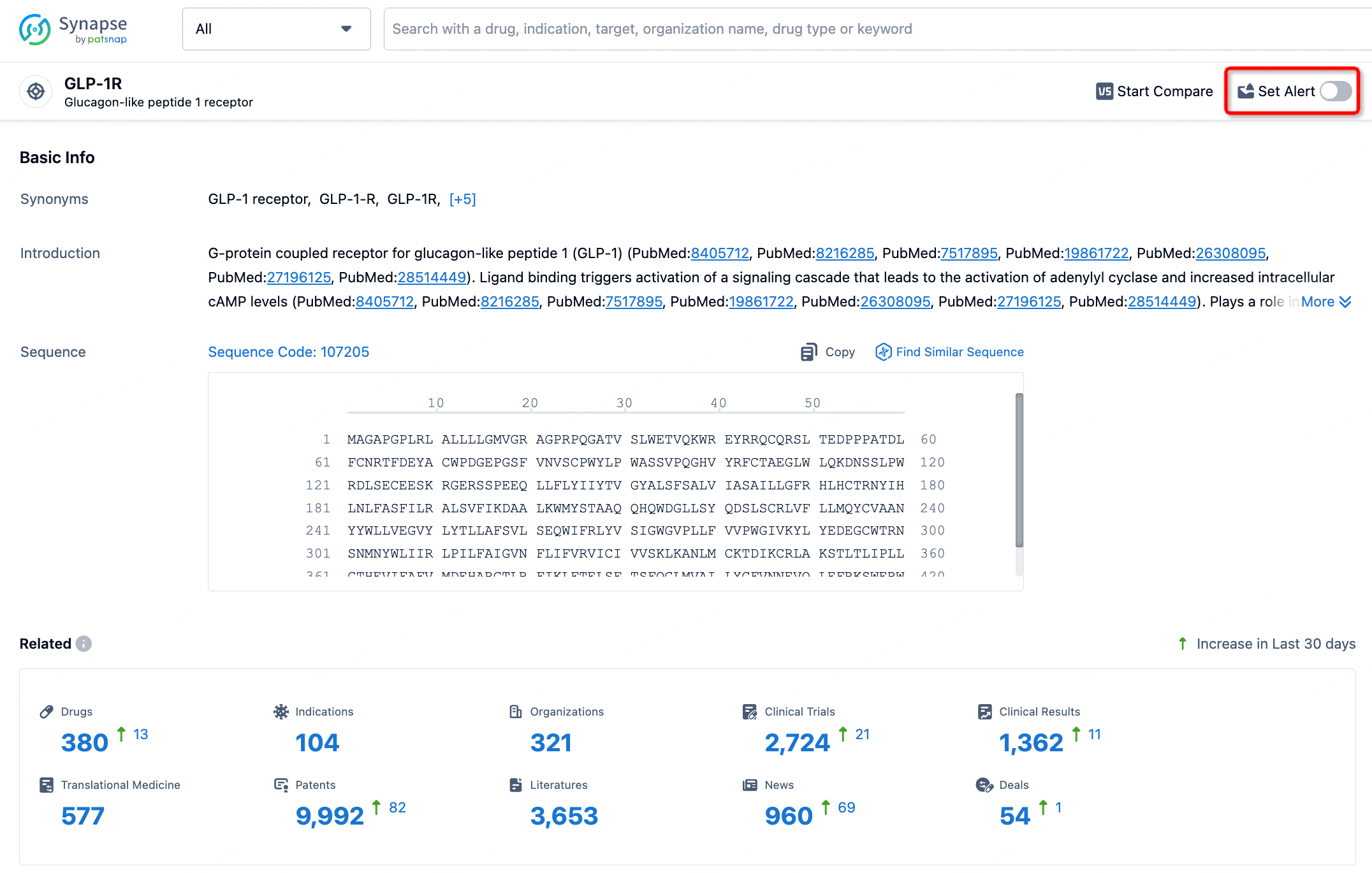Request Demo
What are Fel d 1 inhibitors and how do they work?
21 June 2024
Allergies can pose significant challenges for many people, and pet allergies are among the most common. Specifically, cat allergies affect a considerable portion of the population, causing symptoms ranging from mild discomfort to severe respiratory issues. The primary culprit for these allergies is a protein called Fel d 1, which is found in cat saliva and skin glands. When cats groom themselves, this protein is spread onto their fur and skin, eventually becoming airborne and triggering allergic reactions in sensitive individuals. Fortunately, scientific advancements have led to the development of Fel d 1 inhibitors, which offer a promising solution for those who suffer from cat allergies.
Fel d 1 inhibitors are designed to target and neutralize the Fel d 1 protein, thereby reducing its allergenic effect. These inhibitors work by binding to the Fel d 1 protein, rendering it inactive and preventing it from triggering the immune response that leads to allergy symptoms. This is a significant breakthrough because it addresses the root cause of cat allergies rather than just managing the symptoms.
There are several approaches to inhibiting Fel d 1. One method involves the use of specially formulated cat foods that contain ingredients capable of binding to the Fel d 1 protein in the cat's saliva. When the cat consumes this food, the active ingredients neutralize the Fel d 1 protein before it is spread onto the fur and skin. Another approach involves topical treatments that can be applied directly to the cat's fur. These treatments contain substances that interact with the Fel d 1 protein, preventing it from becoming airborne. Additionally, there are ongoing studies exploring the potential of genetically engineering cats to produce less Fel d 1, although this is still in the experimental stages.
Fel d 1 inhibitors are primarily used for managing cat allergies in humans. For many people, these inhibitors can make the difference between being able to live comfortably with a cat and having to avoid cats altogether. By reducing the amount of active Fel d 1 in the environment, these inhibitors can help alleviate common allergy symptoms such as sneezing, itching, watery eyes, and respiratory issues. This is particularly beneficial for individuals with severe allergies who may otherwise experience significant health problems when exposed to cats.
Moreover, Fel d 1 inhibitors can improve the quality of life for both cats and their owners. For cat owners who are allergic, these inhibitors can mean the ability to keep their beloved pets without suffering from constant allergic reactions. This can also reduce the number of cats that are rehomed or abandoned due to allergy issues. Additionally, by lowering the allergenic potential of cats, these inhibitors can make it easier for allergic individuals to visit friends or family members who have cats, thus reducing social isolation.
In recent years, the availability of Fel d 1 inhibitors has expanded, and they are becoming an increasingly popular option for managing cat allergies. However, it is essential to consult with a healthcare provider before starting any new treatment, especially for individuals with severe allergies or asthma. While Fel d 1 inhibitors can significantly reduce allergy symptoms, they may not entirely eliminate the allergenic effect of cats.
In conclusion, Fel d 1 inhibitors represent a significant advancement in the management of cat allergies. By targeting the root cause of the allergic reaction, these inhibitors offer a more effective and long-term solution compared to traditional symptom management methods. Whether through specially formulated cat foods, topical treatments, or future genetic approaches, Fel d 1 inhibitors have the potential to transform the lives of many individuals who suffer from cat allergies, allowing them to enjoy the companionship of cats without the associated health risks. As research continues to advance, it is likely that even more effective and accessible Fel d 1 inhibitors will become available, further improving the quality of life for both cats and their owners.
Fel d 1 inhibitors are designed to target and neutralize the Fel d 1 protein, thereby reducing its allergenic effect. These inhibitors work by binding to the Fel d 1 protein, rendering it inactive and preventing it from triggering the immune response that leads to allergy symptoms. This is a significant breakthrough because it addresses the root cause of cat allergies rather than just managing the symptoms.
There are several approaches to inhibiting Fel d 1. One method involves the use of specially formulated cat foods that contain ingredients capable of binding to the Fel d 1 protein in the cat's saliva. When the cat consumes this food, the active ingredients neutralize the Fel d 1 protein before it is spread onto the fur and skin. Another approach involves topical treatments that can be applied directly to the cat's fur. These treatments contain substances that interact with the Fel d 1 protein, preventing it from becoming airborne. Additionally, there are ongoing studies exploring the potential of genetically engineering cats to produce less Fel d 1, although this is still in the experimental stages.
Fel d 1 inhibitors are primarily used for managing cat allergies in humans. For many people, these inhibitors can make the difference between being able to live comfortably with a cat and having to avoid cats altogether. By reducing the amount of active Fel d 1 in the environment, these inhibitors can help alleviate common allergy symptoms such as sneezing, itching, watery eyes, and respiratory issues. This is particularly beneficial for individuals with severe allergies who may otherwise experience significant health problems when exposed to cats.
Moreover, Fel d 1 inhibitors can improve the quality of life for both cats and their owners. For cat owners who are allergic, these inhibitors can mean the ability to keep their beloved pets without suffering from constant allergic reactions. This can also reduce the number of cats that are rehomed or abandoned due to allergy issues. Additionally, by lowering the allergenic potential of cats, these inhibitors can make it easier for allergic individuals to visit friends or family members who have cats, thus reducing social isolation.
In recent years, the availability of Fel d 1 inhibitors has expanded, and they are becoming an increasingly popular option for managing cat allergies. However, it is essential to consult with a healthcare provider before starting any new treatment, especially for individuals with severe allergies or asthma. While Fel d 1 inhibitors can significantly reduce allergy symptoms, they may not entirely eliminate the allergenic effect of cats.
In conclusion, Fel d 1 inhibitors represent a significant advancement in the management of cat allergies. By targeting the root cause of the allergic reaction, these inhibitors offer a more effective and long-term solution compared to traditional symptom management methods. Whether through specially formulated cat foods, topical treatments, or future genetic approaches, Fel d 1 inhibitors have the potential to transform the lives of many individuals who suffer from cat allergies, allowing them to enjoy the companionship of cats without the associated health risks. As research continues to advance, it is likely that even more effective and accessible Fel d 1 inhibitors will become available, further improving the quality of life for both cats and their owners.
How to obtain the latest development progress of all targets?
In the Synapse database, you can stay updated on the latest research and development advances of all targets. This service is accessible anytime and anywhere, with updates available daily or weekly. Use the "Set Alert" function to stay informed. Click on the image below to embark on a brand new journey of drug discovery!
AI Agents Built for Biopharma Breakthroughs
Accelerate discovery. Empower decisions. Transform outcomes.
Get started for free today!
Accelerate Strategic R&D decision making with Synapse, PatSnap’s AI-powered Connected Innovation Intelligence Platform Built for Life Sciences Professionals.
Start your data trial now!
Synapse data is also accessible to external entities via APIs or data packages. Empower better decisions with the latest in pharmaceutical intelligence.


